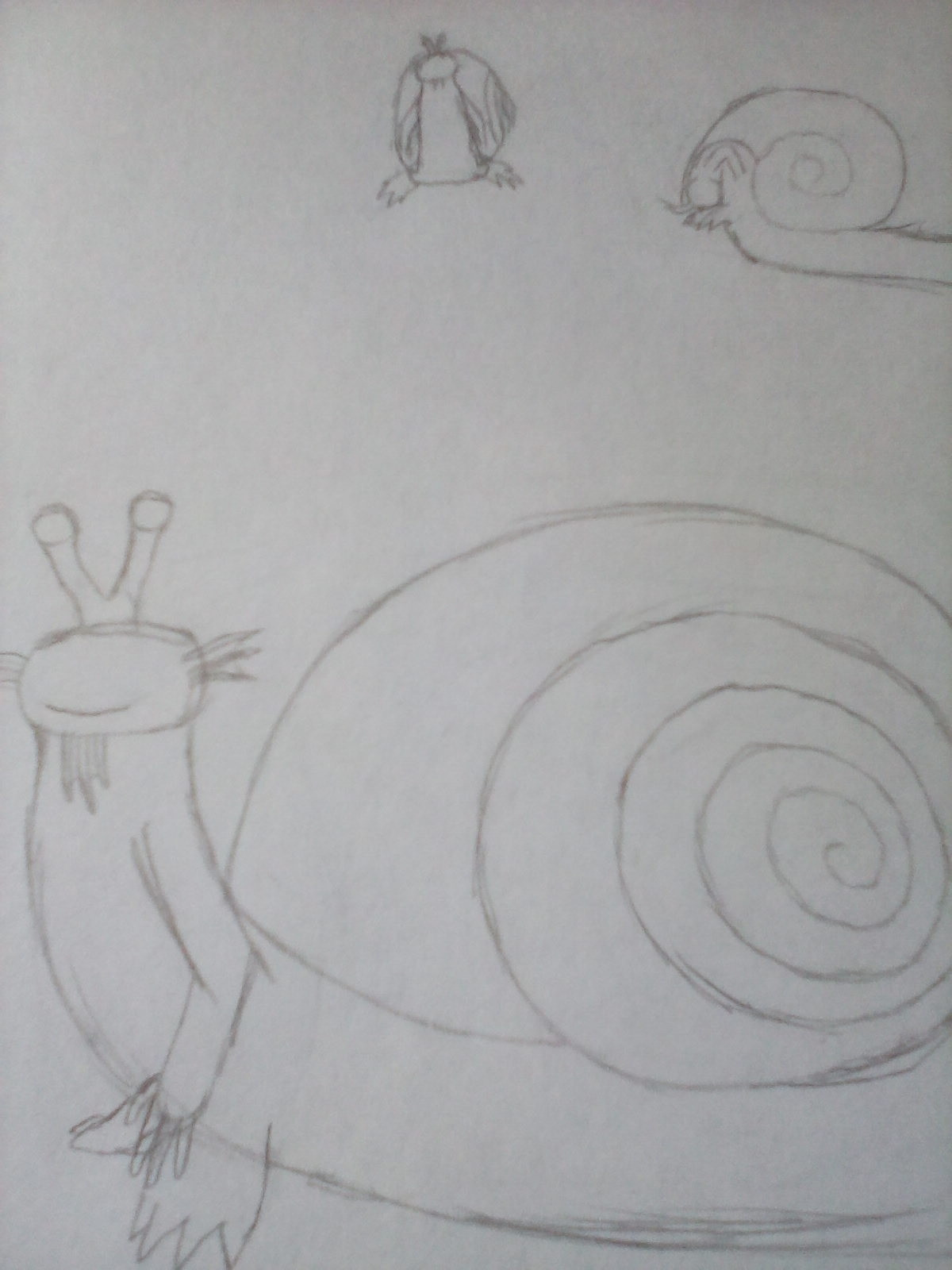I'm making alternate more realistic designs of Kirby characters. I'm working on a version of Escargoon the "snail" here.
Due to his movement in the Kirby anime resembling more of a shuffle I've given my alternate version of him tiny legs sort of like a mole lizards. His movement is also fast. Not slimy looking. Not snail like. So I gave him a more serpentine tail design to realistically enable faster movement like a snake can. The shell is also made larger in my alternate version. Here is a sketch of my alternate design's front half. I've also sketched a potential way he might bend to fit in the shell (I don't know how far in he can go without squishing organs), with the tiny feet being used to block off the entrance. He can stick his eyes out to see if he wants to. Since this creature is semi-aquatic, I'm thinking that perhaps the shell could also be used as a ram by retracting the front half and being propelled by the tail into the target. Since lungs are important for speaking, they might should be in the torso area closer to the mouth. But then how do they not get blocked when he squishes into the shell?
Here is a sketch of my alternate design's front half. I've also sketched a potential way he might bend to fit in the shell (I don't know how far in he can go without squishing organs), with the tiny feet being used to block off the entrance. He can stick his eyes out to see if he wants to. Since this creature is semi-aquatic, I'm thinking that perhaps the shell could also be used as a ram by retracting the front half and being propelled by the tail into the target. Since lungs are important for speaking, they might should be in the torso area closer to the mouth. But then how do they not get blocked when he squishes into the shell?
Now I have tried to research how snails get everything inside the shell. I know they're squishy, but the part out of the shell looks too big to go in. All the diagrams I've looked at show the shell stuffed with organs with no hollow area for the rest of it when it needs to go in. (Though the serpentine tail would probably be to big to fit either way, so only the front part would have to fit in for my redesign.)
So I need an explanation of how they fit that I can understand, then a way for a cartilage supported creature to get in.


